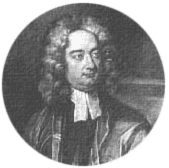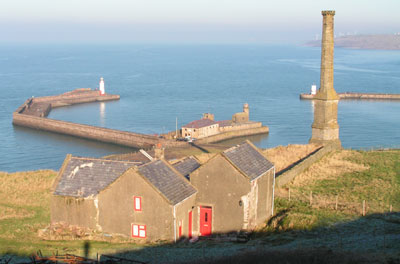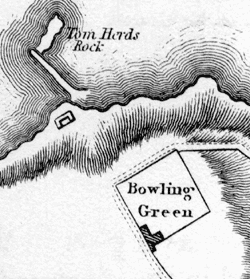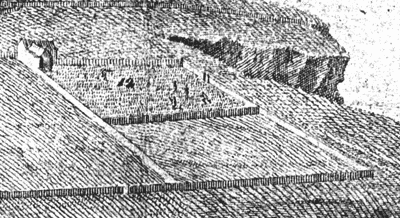

Jonathon Swift is now known for Gulliver's Travels, a brilliant fantasy where a man journeys through strange and wonderful lands including Lilliput a country of tiny people. This was a book of hidden meanings and in fact Jonathon Swift was a great satirist, writing in A Modest Proposal that children of the poor should be eaten. A common theme was this hate of mal treatment of the poor, no doubt inspired by his own impoverished childhood caused by the death of his father, an eminent lawyer, even before he was born. It is interesting then that he became one of the author's that Wordsworth read in his early years.
He also had a connection with Whitehaven that arose from a unusual occurance. When he was a year old, about 1668, a Whitehaven woman who was his nurse returned from Dublin to her home town because she had a dying relative to see. It is not clear whether it was to care for them or purely to gain an inheritance. She was so fond of the young Jonathon that she smuggled him onboard the ship without his mother's and uncle's knowledge and thus the infant arrived at Whitehaven. When it was discovered what had happened, his mother sent instructions that he wasn't to risk the return journey until he was better able to cope with it. Hence, he ended up spending nearly 3 years in Whitehaven under the loving and careful guardianship of this mysterious nurse. He seems not to have suffered from this as by the the time he was 3 years old he could read any chapter of the bible and had learnt to spell.

The building today seems the same as the layout on the 1815 map with an extra building on the right but the roof plan is different than the Read painting of 1738.
This information comes from Swift's own recollections later in life and virtually no other evidence exists. It is not known who this nurse is but there has been a long held tradition that they stayed at the Red Flag Inn on the brows above Tom Hurd rock.

Map of 1815 shwoing the Bowling Green above the Lunette battery. The Red Flag obtained its name from the signal that was raised during gunnery practice.
We can certainly see the building on the Read painting in 1738 when it appears in the corner of the bowling green where the local worthies gathered for a game and a drink.

Marked as 12. The Bowling Green on Parr's engraving it appears like this on three of the four paintings but on the later Whitehaven Museum "Birds Eye View..." the bottom field has the corner cut off to allow for the cliff that had been quarried or fallen away and the eastern field has gone to make way for the track diverted away from the cliff edge.
He became a very successful literary figure in London but eventually returned to Ireland and became Dean of St. Patricks, in Dublin, in 1713. Having already suffered from deafness, in his final years he also had some form of dementia that meant from 1742 his affairs had to be dealt with by guardians.
© WAWL 2006